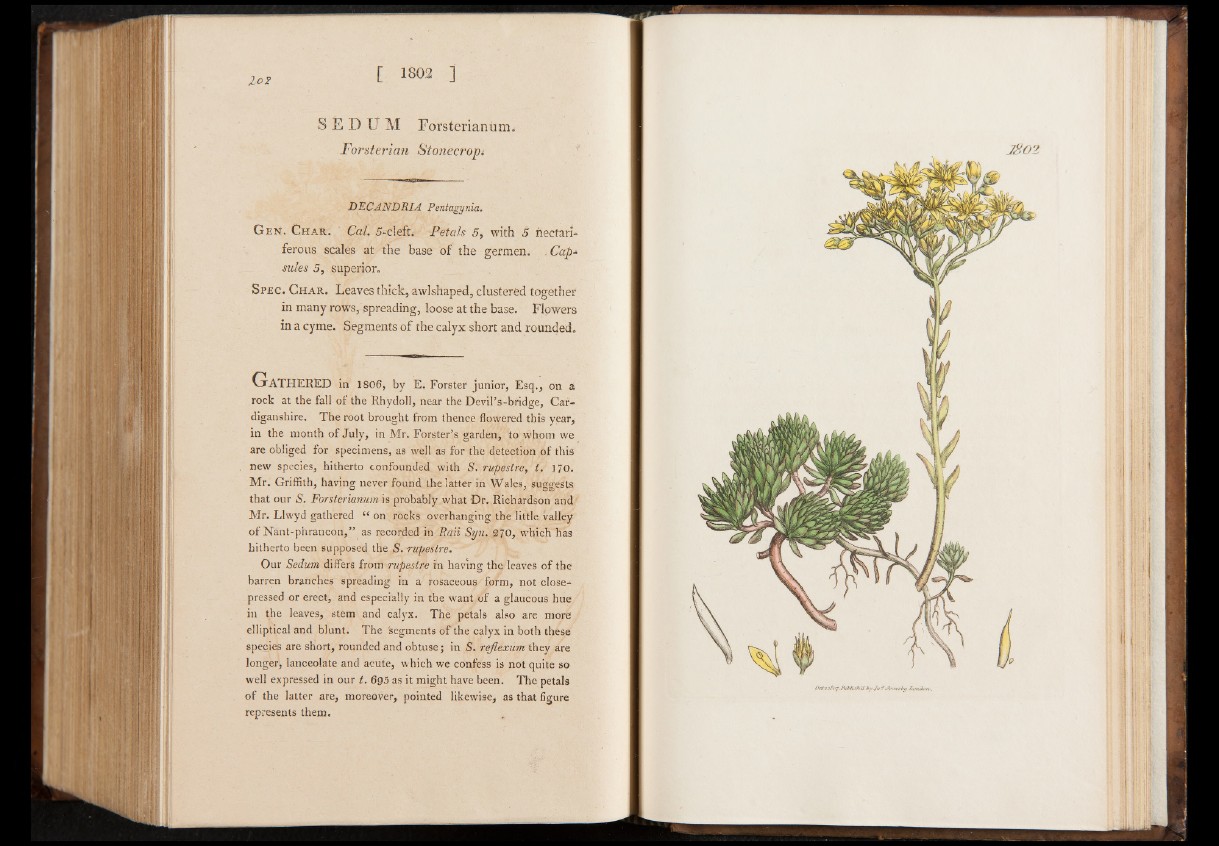
lo Z [ 1 8 0 2 ]
S E D U M Forsterianum.
Forsterian Stonecropt
DECANDRIA Pentagynia.
Gen. Char. Cal. 5-cleft. Petals 5, with 5 nectariferous
scales at the base of the germen. , Capsules
5, superior.
Spec. Char. Leaves thick, awlshaped, clustered together
in many rows, spreading, loose at the base. Flowers
in a cyme. Segments of the calyx short and rounded.
G a t h e r e d in 1806, by E. Forster junior, Esq., on a
rock at the fall of the Rhydoll, near the Devil’s-bridge, Cardiganshire.
The root brought from thence flowered this year,
in the month of July, in Mr. Forster’s garden, to whom we
are obliged for specimens, as well as for the detection of this
new species, hitherto confounded with S. rupestre, t. 170.
Mr. Griffith, having never found the latter in Wales, suggests
that our S. Forsterianum is probably what Dr. Richardson and
Mr. Llwyd gathered “ on rocks overhanging the little valley
of Nant-phrancon,” as recorded in Rail Syn. 270, which has
hitherto been supposed the S. rupestre. -
Our Sedum differs from rupestre in having the leaves of the
barren branches spreading in a rosaceous form, not close-
pressed or erect, and especially in the want of a glaucous hue
in the leaves, stem and calyx. The petals also are more
elliptical and blunt. The'segments of the calyx in both these
species are short, rounded and obtuse; in S. rejlexum they are
longer, lanceolate and acute, which we confess is not quite so
well expressed in our t. 695 as it might have been. The petals
of the latter are, moreover, pointed likewise, as that figure
represents them.